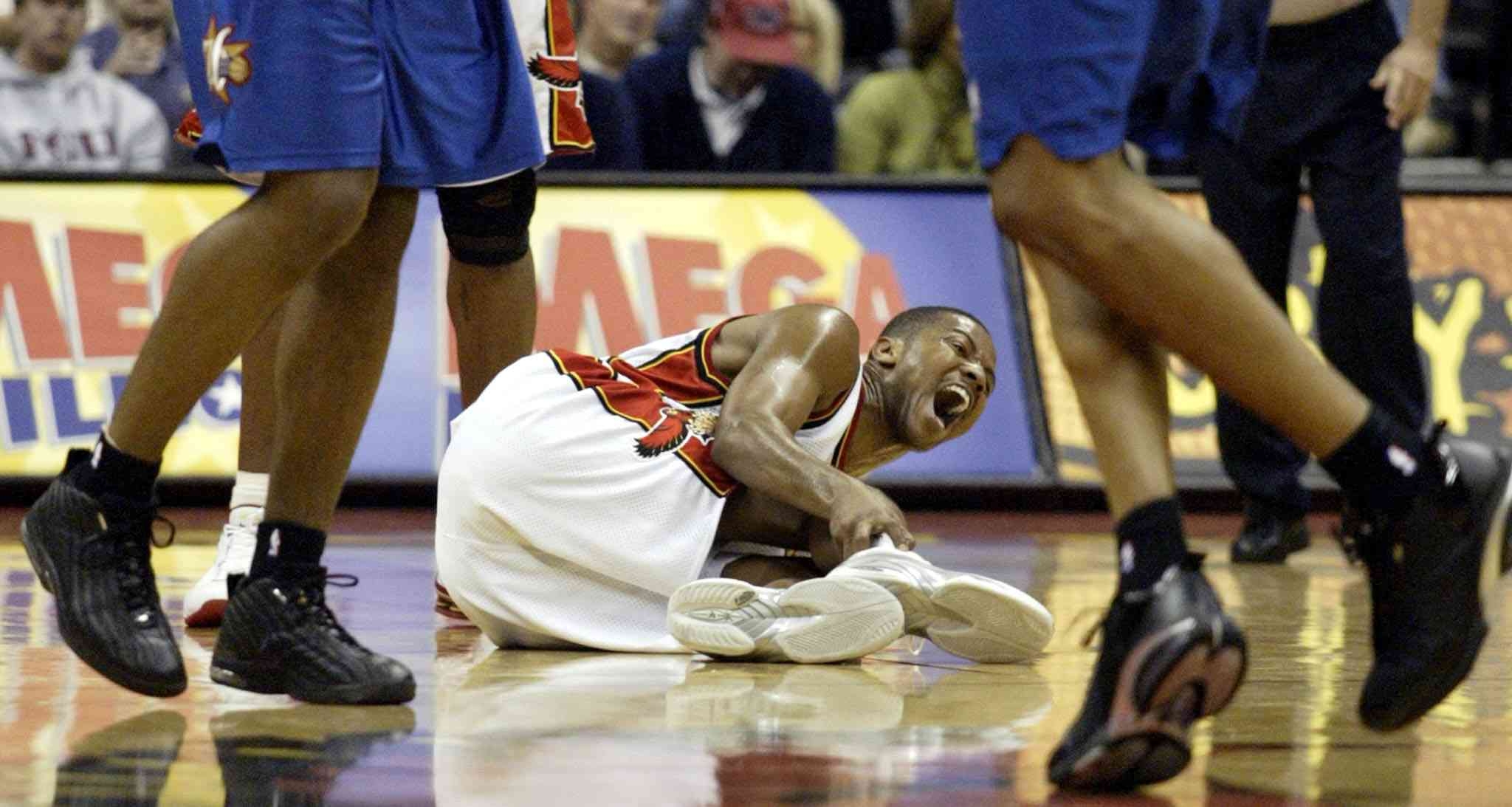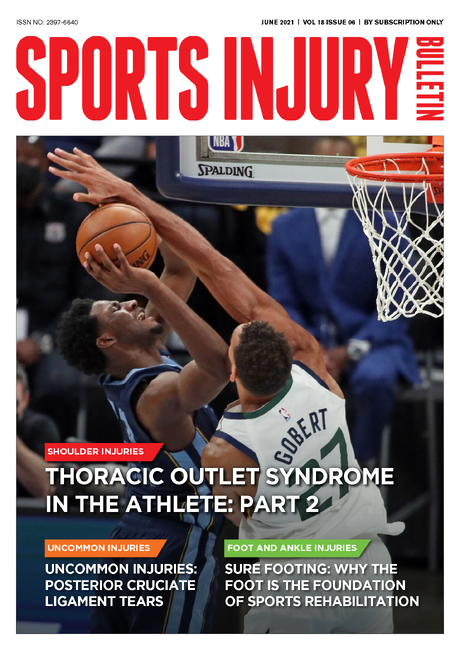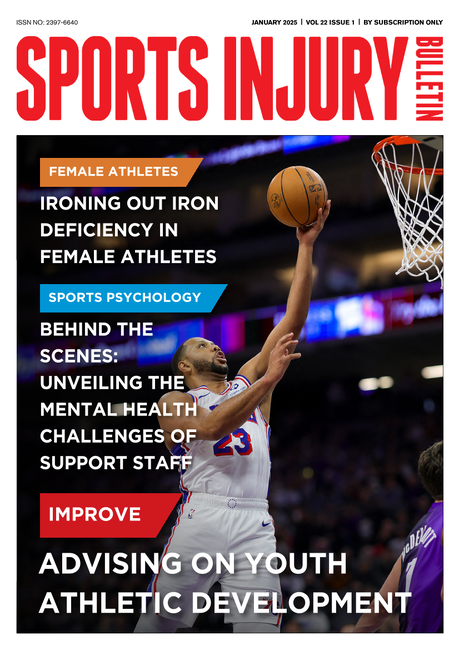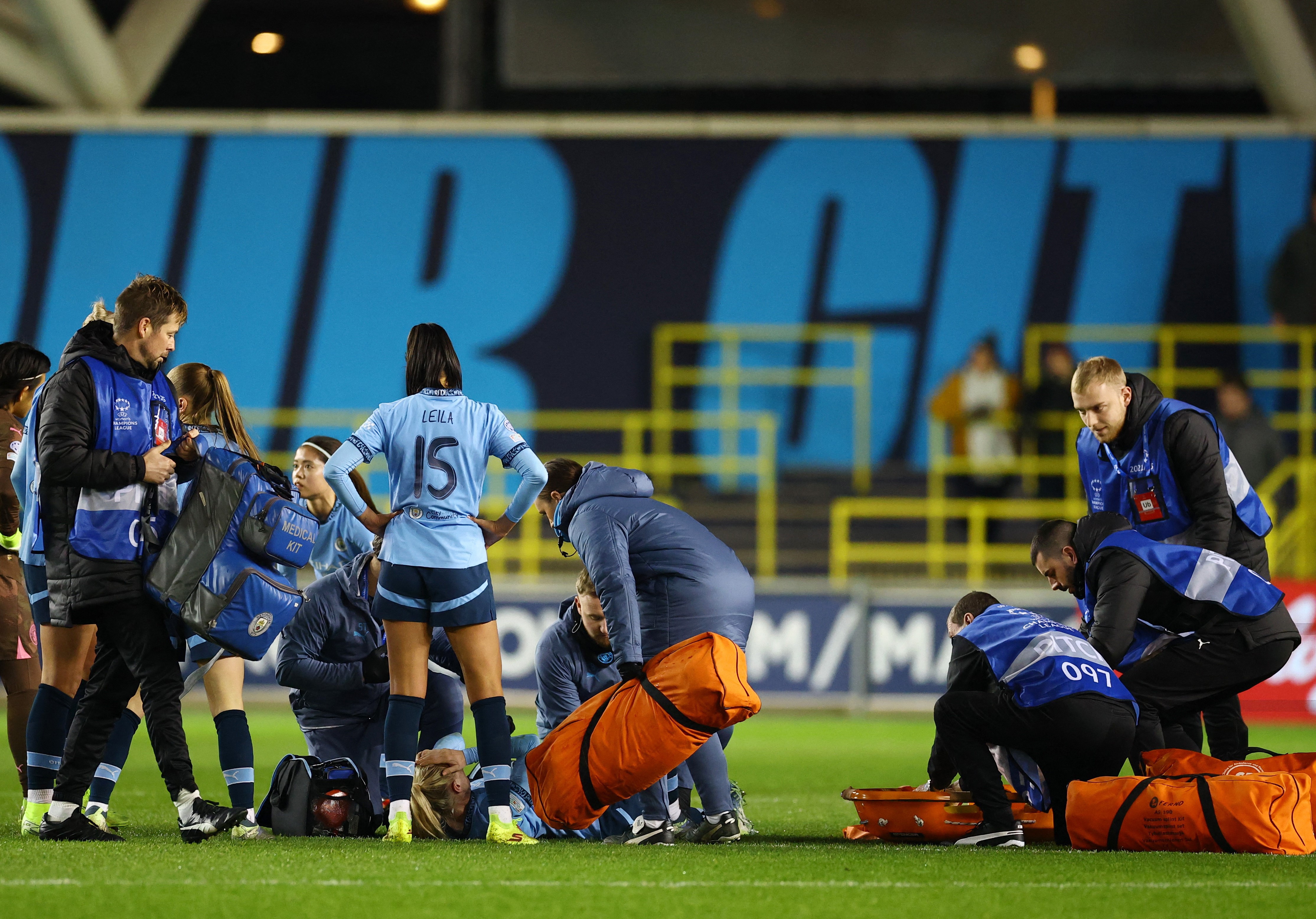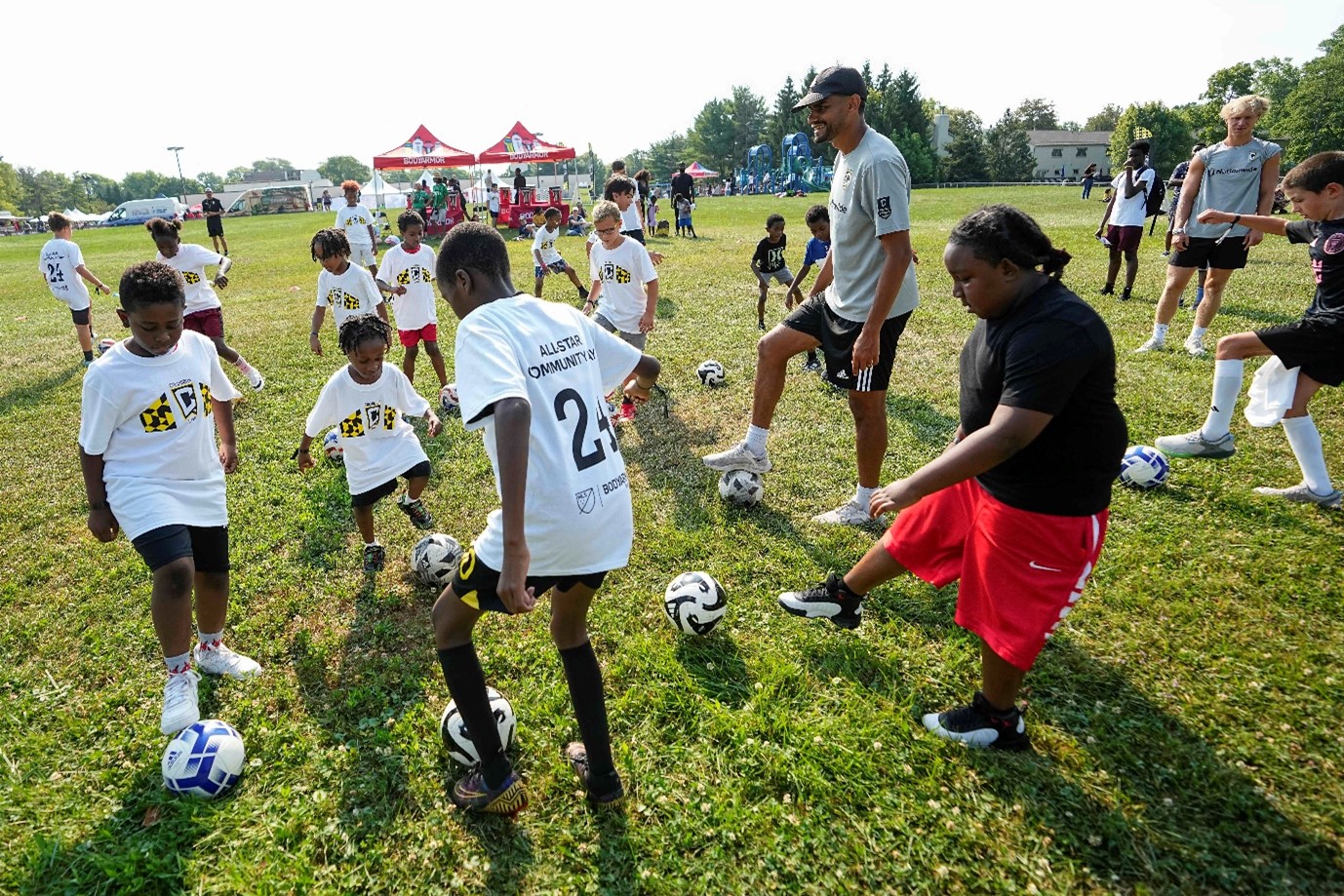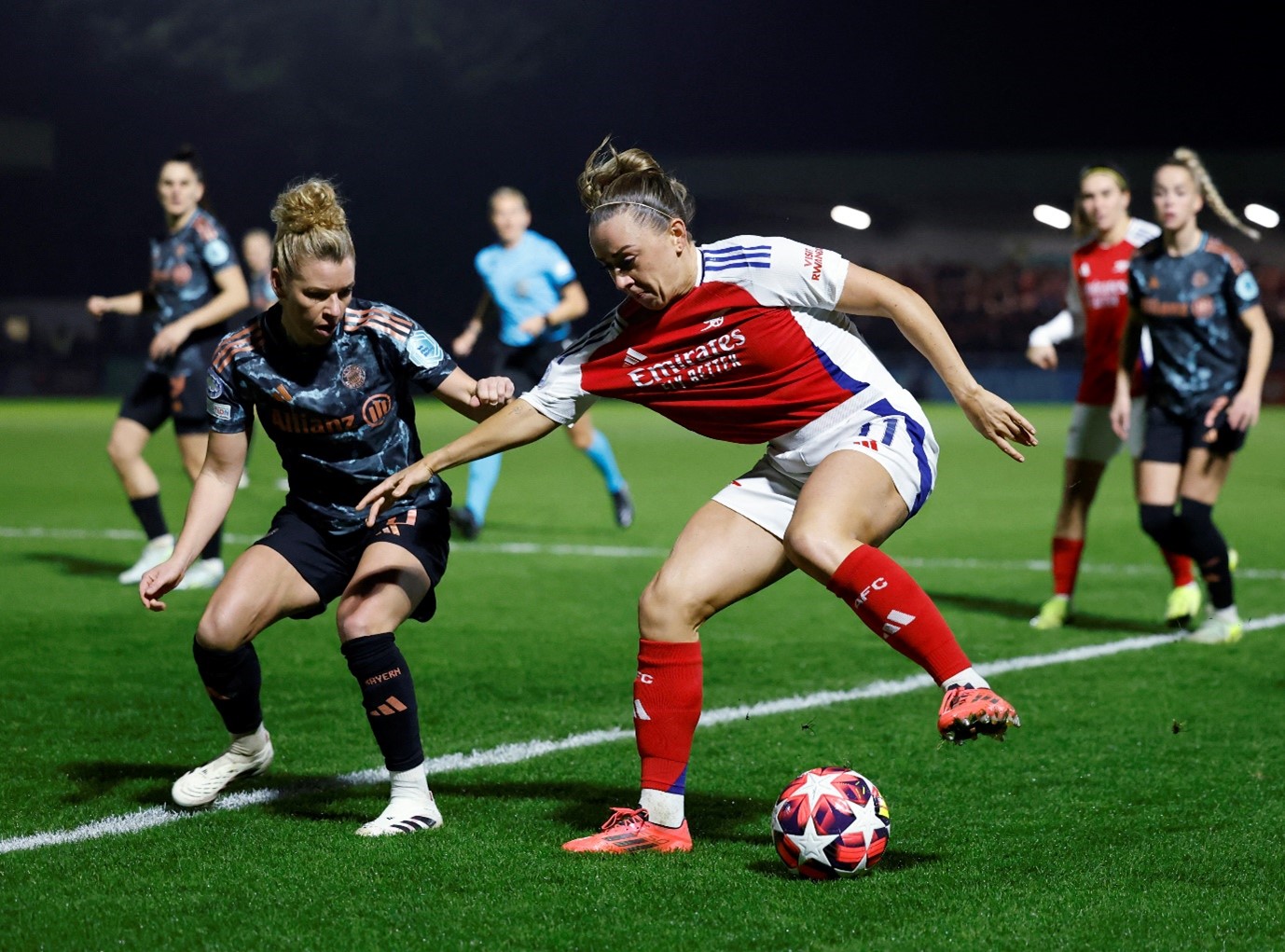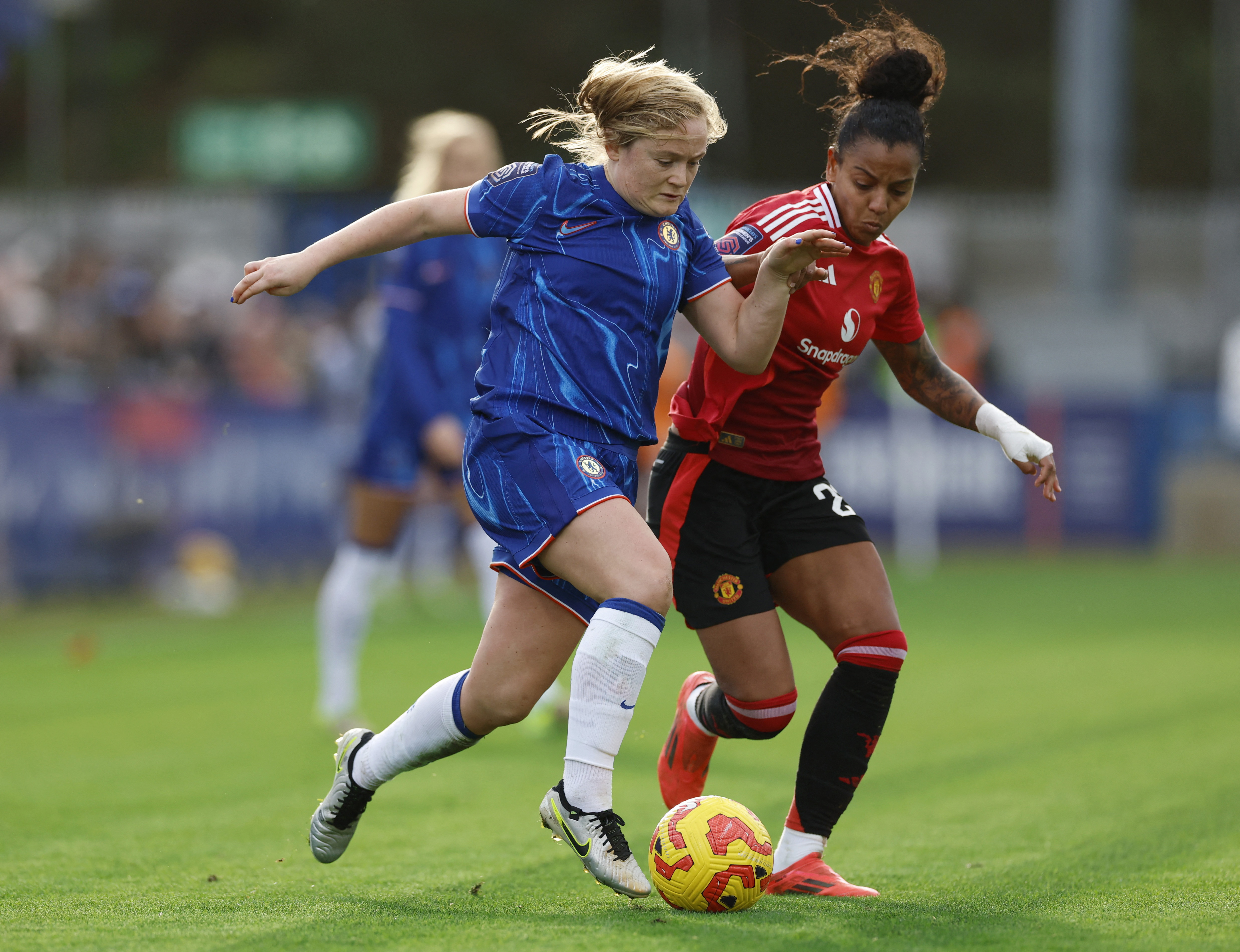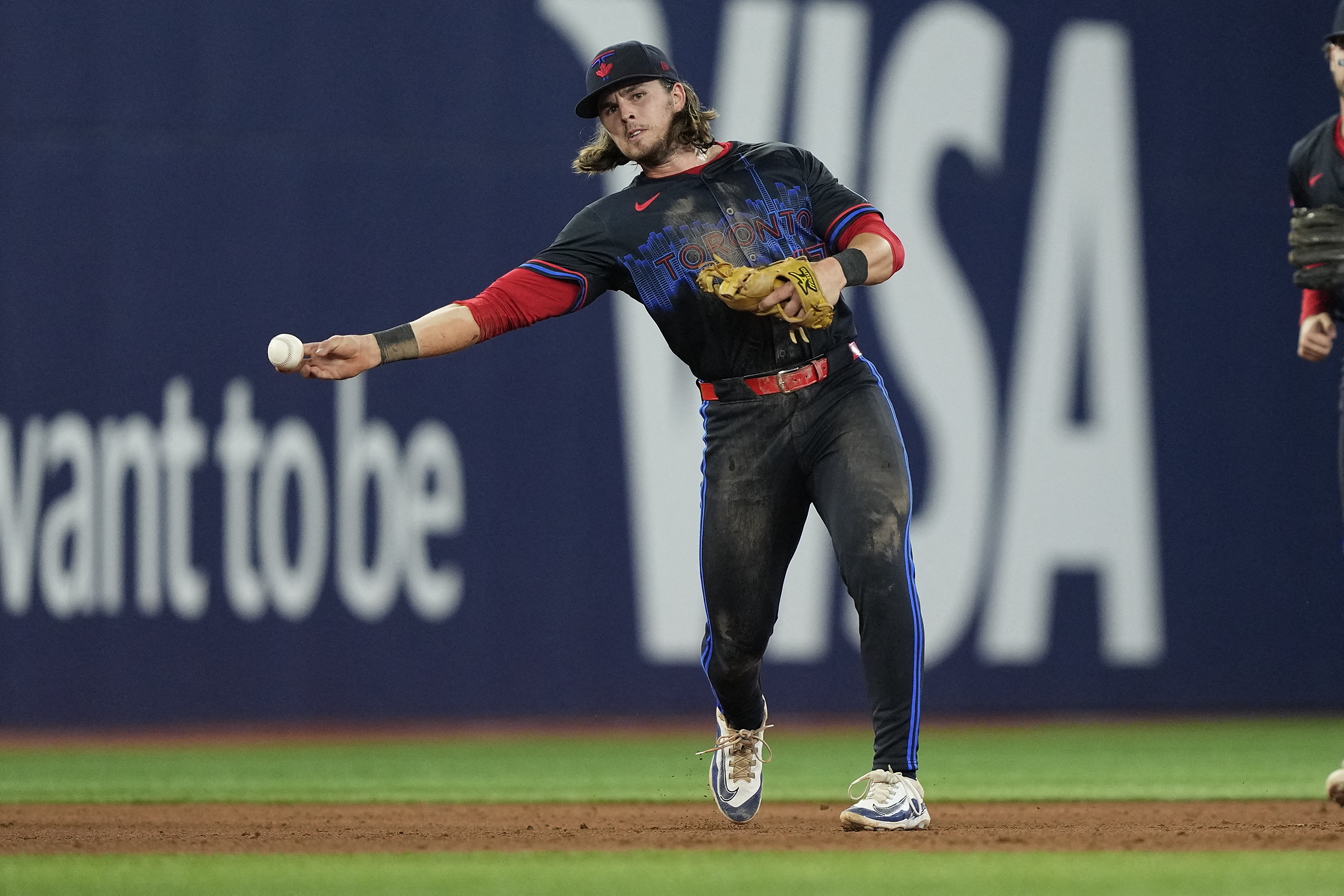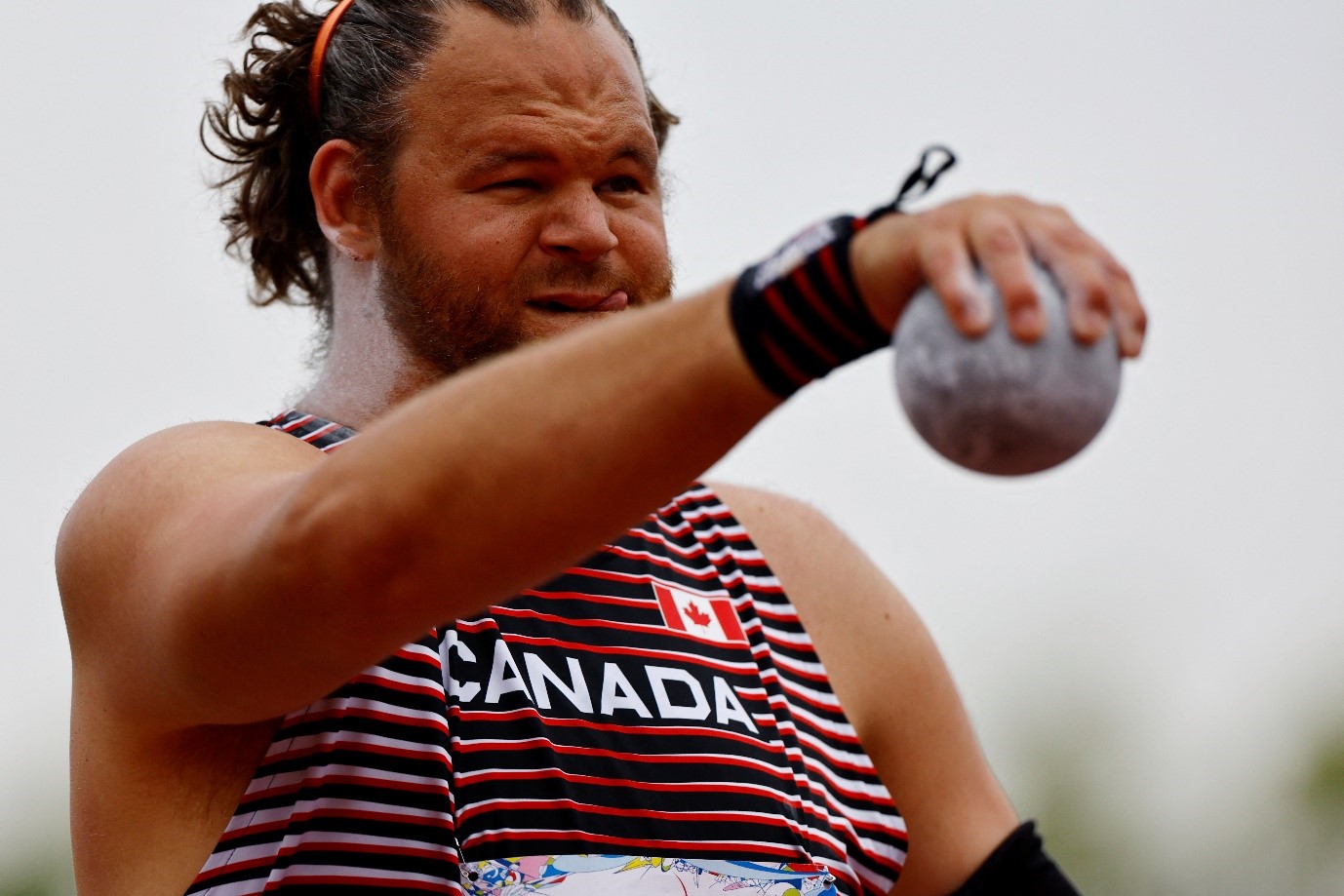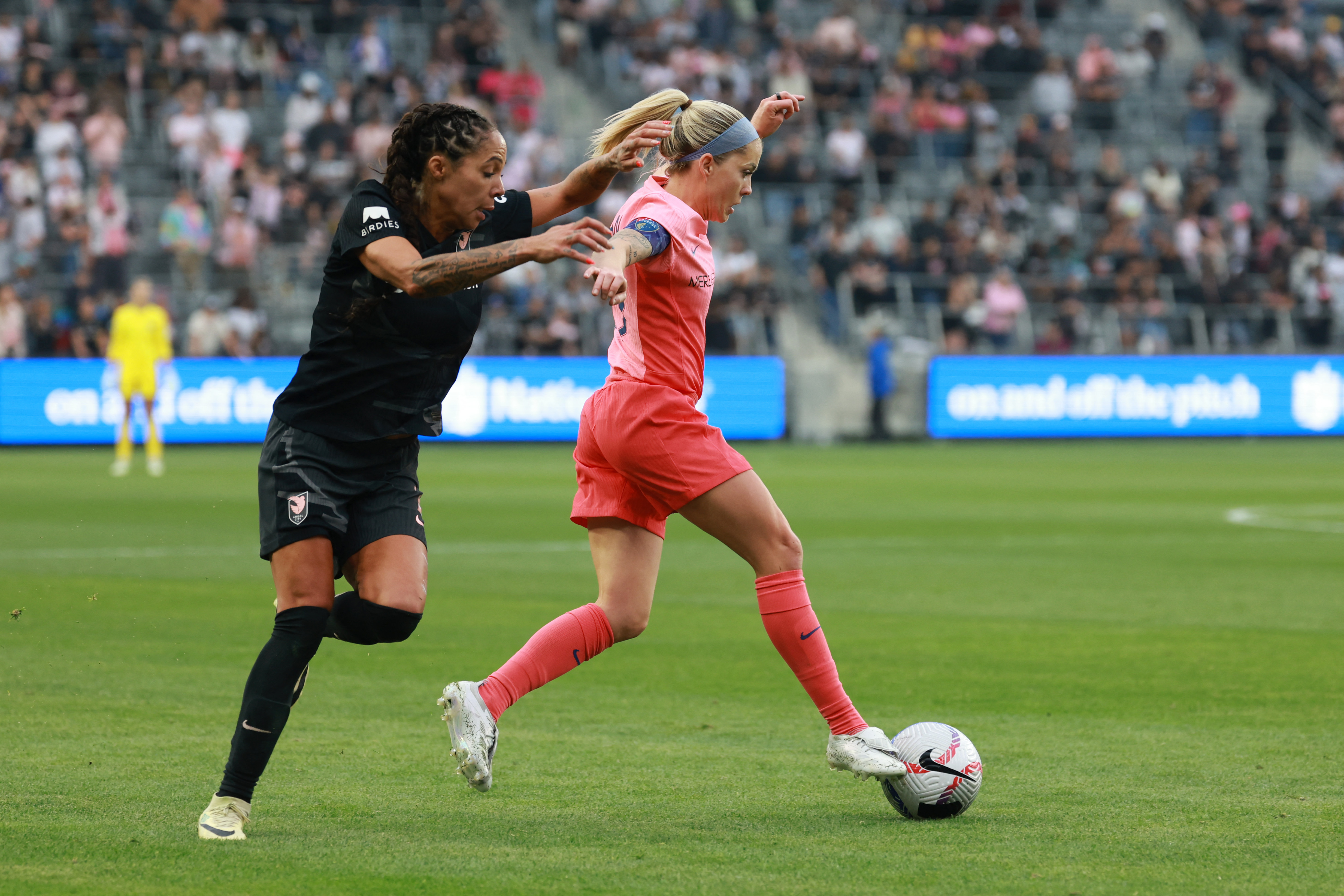You are viewing 1 of your 1 free articles
Fluoroquinolones and Injury
Previous research reported by SIB suggested that fluoroquinolone antibiotics could pose a potential threat to tendon health in sportsmen and women. Andrew Hamilton looks at more recent research on fluoroquinolones and explore the implications for clinicians.
A torn Achilles tendon brought down Atlanta Hawks’ guard Emanual Davis in 2002.
The development of antibiotics is undoubtedly one of mankind’s most significant scientific achievements, saving countless millions of lives since their introduction. However, notwithstanding the current concerns about ‘superbug’ resistance, not everything is rosy in the antibiotic garden. A few years ago, we reported on growing evidence that one particular group of antibiotics – fluoroquinolones – might be implicated in rapid-onset tendon degeneration, exposing sportsmen and women to an increased risk of tendonitis or even tendon rupture. In the intervening years, more research into this topic has been carried out, providing helpful insight for clinicians dealing with athletes who may have athletes in their care who are either taking or have taken fluoroquinolone antibiotics.
Table 1: Structural and biochemical changes in tendon cells induced by fluoroquinolones
| Fluoroquinolones | Structural changes |
| Ciprofloxacin, Enrofloxacin Fleroxacin, Garenoxacin Gemifloxacin, Ofloxacin Pefloxacin |
|
| Ciprofloxacin & Levofloxacin |
|
| Ciprofloxacin & Pefloxacin |
|
Fluoroquinolone Anatomy
Fluoroquinolones are effective; broadspectrum antibiotics first developed in the 1970s, which play an essential role in treating severe bacterial infections such as pneumonia, typhoid, diarrhea, kidney/urinary tract infections, and many other stubborn and virulent infections. Indeed, some of the more recent iterations of fluoroquinolones are particularly effective against bacteria such as Staphylococcus Aureus and Staphylococcus pneumoniae, which have become resistant to many other antibiotics.
The fluoroquinolones (see figure 1) are a subgroup of the more prominent quinolone family of antibiotics. All quinolones work by preventing bacterial DNA from unwinding and duplicating. Common fluoroquinolone antibiotics include ciprofloxacin, levofloxacin, norfloxacin, and gemifloxacin. The fluoroquinolones have the same essential chemical structure (see figure 1). The ‘F’ denotes the fluorine atom (giving rise to the ‘fluoro’ in fluoroquinolones). At the same time, the ‘R’ indicates the chemical side group – the different R groups producing the various types of fluoroquinolone antibiotics.
Figure 1: Fluoroquinolone structure

Fluoroquinolone Concerns
Hailed by some as ‘wonder antibiotics,’ fluoroquinolone use by physicians increased dramatically towards the turn of the century. In the late 90s, however, evidence began to emerge linking fluoroquinolone antibiotic use with structural changes at the cellular level to connective tissue in the body – particularly to collagen, a significant and vital component of tendon tissue.
Many initial findings came from studies on rats (see table 1)(1-6). However, studies on human cell samples seemed to indicate that by causing a decrease in essential components of tendon tissue such as collagen type I, elastin, fibronectin, and proteoglycan, fluoroquinolone-induced degenerative structural changes to tendon tissue were also possible in human tendon tissue(7).
Around the same time, many tendonitis and tendon rupture cases were observed among patients taking fluoroquinolone antibiotics. A 2003 Canadian study of 98 case studies from the scientific literature found that pefloxacin and ciprofloxacin were most frequently implicated, but tendon injury had been reported with most fluoroquinolones(8). The median duration of fluoroquinolone treatment before the onset of tendon injury was eight days, although symptoms occurred as early as two hours after the first dose and as late as six months after treatment was stopped. Up to one-half of patients experienced tendon rupture, and of these, almost one-third had also received long-term corticosteroid therapy before or during fluoroquinolone use.
As concern over the association between fluoroquinolone use and tendonitis/tendon rupture grew, the US FDA issued a ‘prescribing warning’ followed in 2008 by a more general alert on the risks of fluoroquinolone use(9). “Tendinitis and tendon rupture most frequently involves the Achilles tendon, and rupture of the Achilles tendon may require surgical repair. Tendinitis and tendon rupture in the rotator cuff, the hand, the biceps, and the thumb have also been reported. Tendon rupture can occur during or after completion of fluoroquinolone use; cases occurring up to several months after completion of therapy have been reported. Fluoroquinolones should be discontinued if the patient experiences pain or inflammation in a tendon (symptoms that may precede rupture of the tendon) or tendon rupture. Patients are advised, at the first sign of tendon pain, swelling, or inflammation, to stop taking the fluoroquinolone, to avoid exercise and use of the affected area, and to promptly contact their healthcare provider about changing to a non-fluoroquinolone antimicrobial drug.”
Clinical Manifestations of Fluoroquinolone-induced Tendinopathy/Tendon Rupture
Fluoroquinolone-induced tendinopathy/rupture manifests itself differently from ordinary tendon pathology. Signs that clinicians should be aware of include:
- An abrupt onset and sharp pain that occurs spontaneously upon walking or palpation;
- Tendon rupture is almost always preceded by spontaneous pain at the bony insertion two to three centimeters above the insertion point, believed to be correlated with diminished vascularization at this anatomic site;
- Pain, swelling, or inflammation is commonly observed in the tendon area for up to two weeks before rupture occurs;
- Difficulty performing plantar flexion (Thompson’s sign);
- Bilateral pathology is widespread, occurring in up to 50% of cases;
- The weight-bearing Achilles tendon is most commonly affected, occurring in over 90% percent of cases (although other tendons, such as biceps brachii, supraspinatus, and extensor pollicis longus, can also be affected).
Recent Evidence
What does the recent science say about fluoroquinolone use and tendinopathy/ rupture? In terms of etiology, compelling evidence suggests that fluoroquinolones can rapidly affect the chemical composition of tendon structure by depleting glycosaminoglycans (GAGs – compounds vital to the elasticity and integrity of structural tissue) in the tendon.
In a study published earlier this year, researchers used a technique known as sodium magnetic resonance imaging (sodium MR) to study pathological changes and changes in GAG levels in the Achilles tendons in the 14 ankles of seven men who took 500ms of Ciprofloxacin twice a day for ten days(10). After ten days, there was a marked reduction in the GAG content of the Achilles tendon, which, though reversible, still hadn’t fully recovered five months after ending the Ciprofloxacin course (see figure 2).

Figure 2: GAG levels in the Achilles tendon after ten days of Ciprofloxacin
Left = pre-ciprofloxacin, middle = after ten days of Ciprofloxacin, right = five months later. Red/orange areas indicate high GAG levels in the tendon; green = lower levels.The prolonged period of disrupted tendon pathology following fluoroquinolone administration may be aggravated by impaired tendon healing capacity. A recent study on mice examined tendon healing capacity in those treated with Fleroxacin before rotator cuff surgery(11). Compared to control mice who received no Fleroxacin, the treated mice showed significantly less fibrocartilage and poorly organized collagen at the healing enthesis. Moreover, the treated mice had a considerably reduced tendon cross-sectional area, and the researchers concluded that the fluoroquinolone treatment had negatively influenced tendon healing, which could have implications for patients undergoing tendon surgery/repair in the months following a course of fluoroquinolones.
Recent Risk Data
Regarding the risk of particular fluoroquinolone drugs, recent research has suggested that Ciprofloxacin, Fleroxacin, Pefloxacin, and Ofloxacin present the greatest threat to tendon health(12). While other fluoroquinolones, such as Trovafloxacin and Levofloxacin, may present less risk, they are not risk-free. For example, Levofloxacin has been implicated in Achilles tendon rupture in some case studies. At the same time, there may be insufficient data for other fluoroquinolones to determine safety one way or the other(13,14).
More worryingly, recent evidence suggests that when it comes to tendonitis or tendon rupture, athletes and fitness enthusiasts may be especially vulnerable to the effects of fluoroquinolones. There are several reasons why this is the case. Firstly, excessive loading of tendons during physical training is regarded as a significant pathologic stimulus for tendon degeneration. This is because exercise increases the production of enzymes known as ’matrix metalloproteinases,’ some of which can adversely alter the structure of the extracellular matrix of tendons(15).
We also know that low-dose corticosteroids in isolation can increase the risk of Achilles tendon rupture, and evidence suggests that combined use of corticosteroids with fluoroquinolones potentiates this adverse effect(16,17). Indeed, studies indicate that over 50% of patients with fluoroquinolone-related tendon rupture had received systemic or inhaled corticosteroids and that patients prescribed both fluoroquinolones and corticosteroids have a 46-fold greater risk of Achilles tendon rupture than those taking neither medication(18,19)!
Given these facts, a recent review of fluoroquinolone use among athletes has recommended that athletes should not be prescribed fluoroquinolones and should be given alternative antibiotics whenever possible(20). This is particularly true in light of the added risk of corticosteroid treatment; asthma is common among sportsmen and women, many of whom may be using corticosteroid medication(21). Fluoroquinolone use in such athletes could, therefore, be very hazardous.
When fluoroquinolone antibiotics are the only option for an athlete, there’s evidence from cell culture studies that the co-ingestion of vitamin E could help alleviate some harmful effects(22,23). This might occur due to vitamin E’s ability to help prevent free-radical damage in biological membranes. However, whether this protective effect is significant in humans undergoing fluoroquinolone treatment is unknown, and the best option by far is for athletes to avoid fluoroquinolones altogether if possible.
Rehab and Fluoroquinolone-induced Tendinopathy
Graduated eccentric training regimes, in which muscle tendons are subjected to increasing loads during muscle elongation, have proved both popular and effective for the treatment and rehab of tendinopathy – and this approach is supported by the literature(24). For sportsmen and women, eccentric training programs are particularly effective, resulting in a success rate of around 90% in those with tendinopathy – a significantly better outcome than for the (more sedentary) population(25,26).
However, while loading tendons with eccentric exercise may be appropriate for treating tendinopathy in most athletes, this approach should not be used when treating fluoroquinolone-induced tendon conditions, at least in the early stages of symptoms. In a study on this topic, Greene illustrated that patients with fluoroquinolone-related tendinopathy should be rehabilitated using a two-phase approach.
- A second phase, consisting of progressive loading
- An initial phase of bracing and support to allow the tendon to recover from the chemical injury caused by the fluoroquinolone
A Two-phase Approach for Rehab of Fluoroquinolone-induced Tendinopathy
The approach advocated by Green consists of an overlapping two-phased intervention. The first phase consisted of techniques to protect the tendon from overload stresses, and the second phase consisted of graduated loading of the tendon and muscle. In the early stages of treatment, the tendon is likely to overload easily, causing inflammation. To protect the tendon from overloading forces, techniques should initially be used to unload the tendon during weight-bearing activities, “e.g., use of crutches and heel lifts to decrease tendon loading. During the third week of therapy, a counterforce Achilles tendon brace (a non-elastic constraint with a tension strap that crosses the Achilles tendon) can be used during functional weight-bearing activities, excluding specific exercises. The theory behind the tendon brace is that pressure from the tension strap either broadens the musculotendinous attachment or limits muscle expansion during contraction, resulting in decreased stress within the tendon. After three weeks, a progressive exercise program consisting of graduated loading of the tendon begins. The patient’s feedback in these early stages is essential, and the progression in loading needs to be very gradual. Patients should be encouraged to keep a daily log of exercises performed and their responses to them. Ancillary exercises such as deep water walking, gentle stretching, and stationary cycling (with the arch of his foot contacting the pedal to decrease the force on the Achilles tendon) can also be helpful. This phase may take three months or more before full functionality is restored.
Practical Recommendations
- Athletes should avoid using fluoroquinolone antibiotics unless no alternative is available. This is especially true if corticosteroid medication is also used.
- If a fluoroquinolone antibiotic has been prescribed and no alternative is available, athletes should immediately reduce high-intensity and ballistic activities and total training volume. These reductions should remain throughout the antibiotic course, and athletes should be made aware of the increased risk for the development of musculoskeletal complications for up to 6 months following antibiotic treatment. Co-administration of vitamin E supplements might provide some protective effects.
- Oral or injectable corticosteroids should never be administered while an athlete takes fluoroquinolones. -If the athlete has no symptoms after completing the full course of the antibiotic, then a graduated return to full activity under direct medical supervision should be initiated, with close monitoring for the development of musculoskeletal symptoms.
- If any pre-rupture symptoms are noted, all athletic activity should cease immediately, and fluoroquinolone should be discontinued if possible.
- Clinicians treating fluoroquinolone-induced tendinopathy should be aware that tendons may not respond well to the usual rehab protocols (e.g., eccentric training) and that an extended period of force unloading may be required before a very gradual program if eccentric training begins
Summary
Evidence continues to mount, suggesting that fluoroquinolone antibiotics are harmful to sportsmen and women, who seem particularly vulnerable to their effects. Not only do they adversely affect the chemical composition and structural integrity of tendons, but their use appears to inhibit the normal repair mechanisms that bring about recovery from tendon injury. Worse, the risk of fluoroquinolone-induced tendinopathy is further increased when corticosteroid medication is being used, which is the case in many athletes with asthmatic conditions. In light of the above, clinicians should follow the recommendations below when dealing with athletes who have been on fluoroquinolone antibiotics in the past six months.
References
- Toxicology 2005, 212, 24-36
- Int. J. Antimi- crob. Agents 2010, 35, 366- 374
- Antimicrob. Agents Chemother. 2000, 44, 261-266
- Arch. Toxicol. 2001, 75, 97-102
- Arch. Toxicol. 2001, 75, 369-374
- Arch Toxicol. 2003, 77, 521-526
- Am. J. Sports Med. 2000, 28, 364-369
- Clin Infect Dis. 2003 Jun 1;36(11):1404-10
- US FDA Alert: 7/8/2008 – www.fda. gov/drugs/drugsafety/postmarketdrugsafety informationforpatientsandproviders/ucm 126085.htm
- Radiology. 2015 Jun; 275(3): 763–771
- Am J Sports Med. 2014 Dec;42(12):2851-9
- Biomed Semantics. 2015 May 1;6:18
- Foot Ankle Int. 2007;28(12):1287–1289
- Chemotherapy. 2007;53(2):85–103
- Br J Sports Med. 2005;39(11):789–791
- BMJ Case Rep. 2009;2009. doi:10.1136/ bcr.08. 2008.0697
- J Plast Reconstr Aesthet Surg. 2008;61(7):830–834
- Clin Infect Dis. 2003;36(11):1404–1410
- Drug Saf. 2006;29(10):889–896
- J Athl Train 2014;49(3):422–427
- Dan Med J. 2012;59(4):A4405
- BMC Pharmacol. 2008 Feb 11;8:2. doi: 10.1186/1471-2210-8-2
- Hum Exp Toxicol. 2002;21(12):635–641
- Sports Med Arthrosc Rev. 2000;8(1):17–31
- Sports Traumatol Arthrosc. 2003;11(5):327–333
- J Med Sci Sport. 2007;10(1):52–58
- Phys Ther. 2002;82(12):1224–1231
Newsletter Sign Up
Subscriber Testimonials
Dr. Alexandra Fandetti-Robin, Back & Body Chiropractic
Elspeth Cowell MSCh DpodM SRCh HCPC reg
William Hunter, Nuffield Health
Newsletter Sign Up
Coaches Testimonials
Dr. Alexandra Fandetti-Robin, Back & Body Chiropractic
Elspeth Cowell MSCh DpodM SRCh HCPC reg
William Hunter, Nuffield Health
Be at the leading edge of sports injury management
Our international team of qualified experts (see above) spend hours poring over scores of technical journals and medical papers that even the most interested professionals don't have time to read.
For 17 years, we've helped hard-working physiotherapists and sports professionals like you, overwhelmed by the vast amount of new research, bring science to their treatment. Sports Injury Bulletin is the ideal resource for practitioners too busy to cull through all the monthly journals to find meaningful and applicable studies.
*includes 3 coaching manuals
Get Inspired
All the latest techniques and approaches
Sports Injury Bulletin brings together a worldwide panel of experts – including physiotherapists, doctors, researchers and sports scientists. Together we deliver everything you need to help your clients avoid – or recover as quickly as possible from – injuries.
We strip away the scientific jargon and deliver you easy-to-follow training exercises, nutrition tips, psychological strategies and recovery programmes and exercises in plain English.
